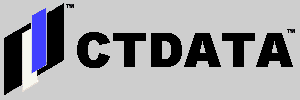CTDATA.com Style Guide
This is a brief guide to the conventions used in CTDATA.com stories.
Parts of a story
Stories are divided into Intro Text and Body Text. Content entered into Intro Text appears on the CTDATA.com home page and the relevant section page. Many stories on this site are completely contained in the Intro Text section.Body Text is generally used for stories longer than three or four paragraphs, although there is no hard-and-fast rule about the maximum length of the Intro Text section of a story. It is not necessary to end the Intro Text block with a <P> tag unless the text visible to the reader in the Intro Text block is less than 3 lines.
If a story continues into the Body Text block, the Intro Text should generally end with a paragraph that invites the user to read on, and summarizes what else is contained in the story. For example:
Read on for a summary of the article and some thoughts on what we've noticed in looking at our sites....This example is taken from http://www.ctdata.com/cm/2001/12/19/0620244.shtml.
Importance of the first link in a story
This site is a Weblog. You will find that nearly all stories are discussions of information that appears elsewhere on the World Wide Web. Therefore, stories should be written so that the first hypertext link is the main point of interest for the reader.The implication of this is that we do not generally provide links to the main page of the subject's source site. For example, if a CTDATA.com article points to an article that appears in the New York Times, the first link in the Intro Text section of the CTDATA.com story is to the URL of the specific New York Times story, not to the home page of the New York Times itself.
However, stories that are driven off of content from other Web Sites are quite often attributed in the following manner:
Qwest Stops Expanding DSL Service AreasAs you can see, the publication that the link is attributed to (EETimes) is in bold text. If it were a link, many people would click on it and not on the link that points to the story we want people to read.Posted by dave_aiello on Dec 20 2001 6:45AM
from the no-competition department.EE Times reports that Qwest has halted the expansion of the number of central offices where it deploys DSL service equipment. Qwest acquired USWest a while ago, and is now the Regional Bell Operating Company for the Northwestern United States....
Example is from http://www.ctdata.com/broadband/2001/12/20/0645238.shtml.
Link Text
Wherever possible, link text for the first link should summarize the entire Web Page that the link points to. In the example shown above, the link text (Qwest has halted the expansion of the number of central offices where it deploys DSL service equipment) summarizes the EETimes story.Note that link text is pulled out by the Slash engine and stuck into a Slashbox called "Related Links" that appears on each story page. Therefore, link text should be kept as concise and in context as possible.
Other information typically printed in bold
Stories also generally print the following things in bold:- names of companies or institutions
- names of people
- name of CTDATA or CTDATA.com
- If following the bolding rules seems overly repetitious, then bolding of the above items should occur once in the story.
- Elements that are normally printed in bold may be turned into links at the author's option. However, the link should only be made once, and it should occur as high in the story as possible.
Use of CTDATA versus CTDATA.com
CTDATA is used to refer to Chatham Township Data Corporation. CTDATA.com is used when stories need to refer to the Web Site itself in a way that does not relate strongly to the company. Examples:- CTDATA builds Slashcode based Web Sites.
- We have added a new feature to CTDATA.com.
Use of First Person versus Third Person
First person viewpoint is generally used in the following cases:- Whenever a story is submitted by a registered user of CTDATA.com or an Anonymous Coward and their personal reflections or insights add value to the story.
- When a story is created entirely by an author and the story loses impact if "I", "me", or "my" are removed.
- When a story is created entirely by an author and its viewpoint deviates from the established corporate position of CTDATA. This can only be determined by the general sense of previous postings on CTDATA.com.
When first person stories extends into the Body Text block, that block should begin with "Name of person continued:". The rest of the story should be written inside of <blockquote> tags.
Third person viewpoint is used on all other stories.
Note: If you think that an article written in third person have any political implications, be sure that they agree with positions taken in other articles on CTDATA.com that are written in third person. If there is any non-trivial difference, rewrite the article in first person, and attribute it to yourself.
